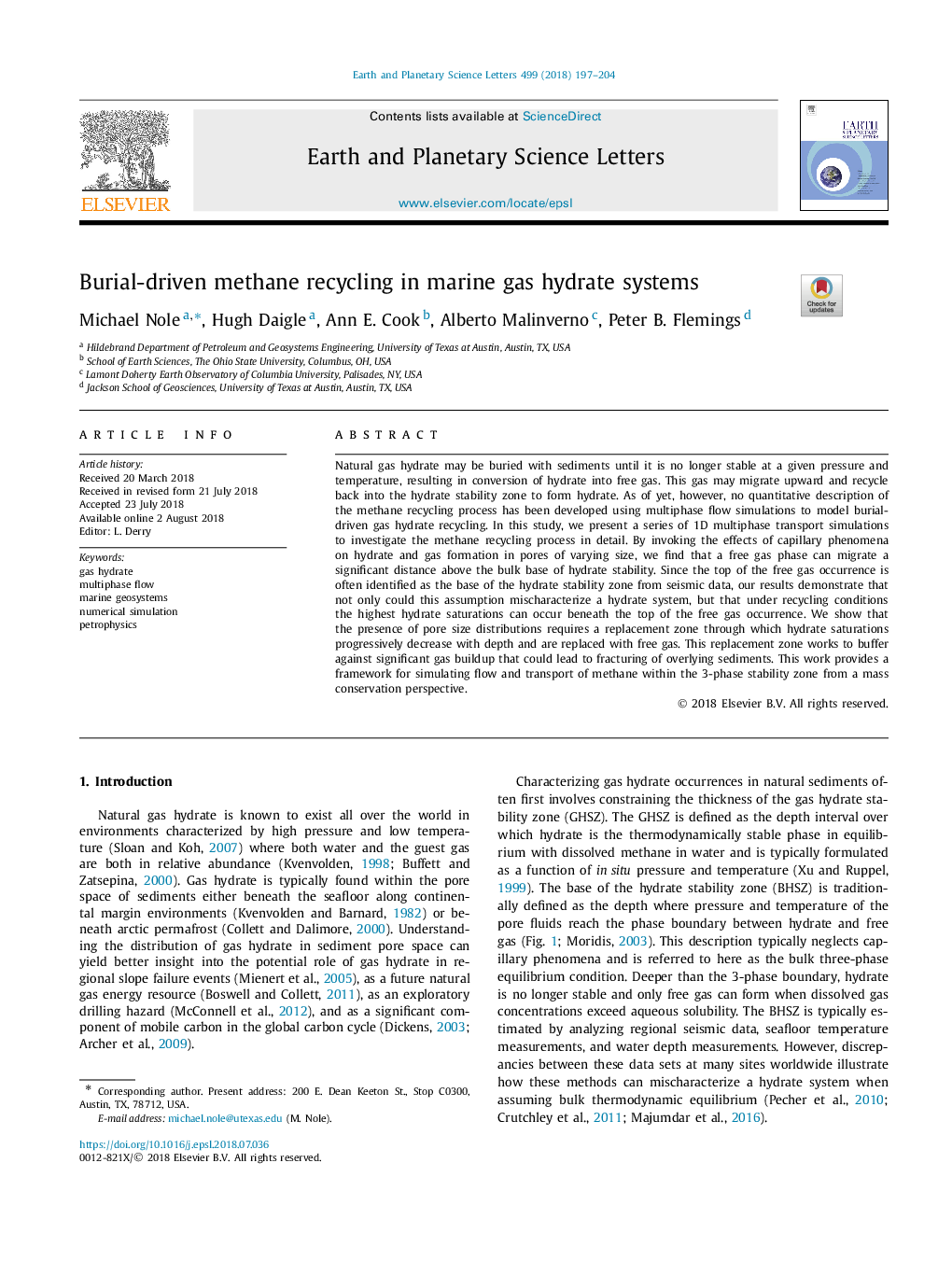| Article ID | Journal | Published Year | Pages | File Type |
|---|---|---|---|---|
| 8906690 | Earth and Planetary Science Letters | 2018 | 8 Pages |
Abstract
Natural gas hydrate may be buried with sediments until it is no longer stable at a given pressure and temperature, resulting in conversion of hydrate into free gas. This gas may migrate upward and recycle back into the hydrate stability zone to form hydrate. As of yet, however, no quantitative description of the methane recycling process has been developed using multiphase flow simulations to model burial-driven gas hydrate recycling. In this study, we present a series of 1D multiphase transport simulations to investigate the methane recycling process in detail. By invoking the effects of capillary phenomena on hydrate and gas formation in pores of varying size, we find that a free gas phase can migrate a significant distance above the bulk base of hydrate stability. Since the top of the free gas occurrence is often identified as the base of the hydrate stability zone from seismic data, our results demonstrate that not only could this assumption mischaracterize a hydrate system, but that under recycling conditions the highest hydrate saturations can occur beneath the top of the free gas occurrence. We show that the presence of pore size distributions requires a replacement zone through which hydrate saturations progressively decrease with depth and are replaced with free gas. This replacement zone works to buffer against significant gas buildup that could lead to fracturing of overlying sediments. This work provides a framework for simulating flow and transport of methane within the 3-phase stability zone from a mass conservation perspective.
Related Topics
Physical Sciences and Engineering
Earth and Planetary Sciences
Earth and Planetary Sciences (General)
Authors
Michael Nole, Hugh Daigle, Ann E. Cook, Alberto Malinverno, Peter B. Flemings,
